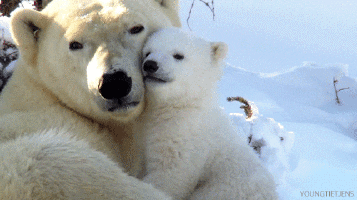Why Do Polar Bears Have White Fur?
Trick question! They don't.

When I think of polar bears and what makes them so unique, one of the most identifying features that come to mind is, of course, their iconic white fur. But what would you say if I told you that their fur isn’t really white at all? In fact, it’s one of the best kept furry secrets of our friends in the Arctic—polar bear fur is actually transparent.

That’s right! Polar bear hair shafts are actually hollow, which allows the fur to reflect back the light of the sun. Much like ice, this reflection is what allows these bears to appear white or even yellow at times. It’s also thought that the transparency of their thick coats is designed to allow better heat absorption from the sun into their black skin beneath. This is particularly helpful when the temperature dips below -30° F in the Arctic. If you’ve ever seen a polar bear outside the Arctic, you may have noticed they seem a little green. In a warmer environment (like in a zoo), algae can actually grow inside these tiny hollow hairs. With a good filtration system though, even bears in captivity should be able to maintain their “white” fur.

In addition to a really dense layer of fat (approximately 2-4 inches!), polar bears also have two fur coats—one protective outer layer and one dense undercoat to help them survive in the Arctic’s harsh climate. This double layer provides not just insulation but camouflage amidst the snow which really helps them out when it comes to hunting.
Get Ocean Updates in Your Inbox
Sign up with your email and never miss an update.
Since polar bears rely so heavily on their coat for warmth, they are also pretty meticulous about keeping themselves clean. Dirty fur is simply not acceptable or effective in keeping them warm. They will typically roll in the snow or take a swim to clean up and cool down. Believe it or not, their fur coat is so good at insulation that even polar bears can overheat after a particularly grueling hunt or playtime with their pals.
Your secret is out, polar bears! And yet, we love you for so much more than your iconic fur. Join us in celebrating polar bears and the other marine mammals that call the Arctic home.